XML Sitemaps generator: Help Google discover your pages!
- Generate XML sitemap quickly and easily even for large sites
- Optimize your crawl budget by setting priority and frequency of pages update
- Exclude web pages from your Google XML Sitemaps blocked by robot.txt
- Create XML Sitemaps with hreflang tags
- Automatically submit your Sitemap to crawl, uploading it to your site via FTP
Why you need an XML Sitemap
An XML Sitemap is a list of URLs on your site in XML format that tells search engines how to index your pages. The XML Sitemap allows Google to retrieve information about your site structure and pages. It also informs search engines when you update your content. In the XML Sitemap you can indicate the priority of any given page, and how often your pages are modified. An XML Sitemap is needed:
- To have a freshly launched website indexed quickly and correctly.
- To ensure that all pages are discovered by search engines.
- To increase a website's online visibility.
- Help crawlers and bots index complex websites with high click depth.
- To ensure that multilingual sites are rendered correctly to viewers.
- To optimize your crawl budget.
XML Sitemap generator to create a sitemap in a few clicks
The in-built XML Sitemap generator in WebSite Auditor SEO spider lets you generate an XML sitemap quickly and easily. Creating a ready-to-submit XML sitemap is a matter of a few clicks. First, install and launch Website Auditor. Enter the URL of your site to create a project, and the software will immediately crawl your site. Then, in your Website Auditor project, go to Site Structure > Pages > Website Tools and click the Sitemap button in the main toolbar.
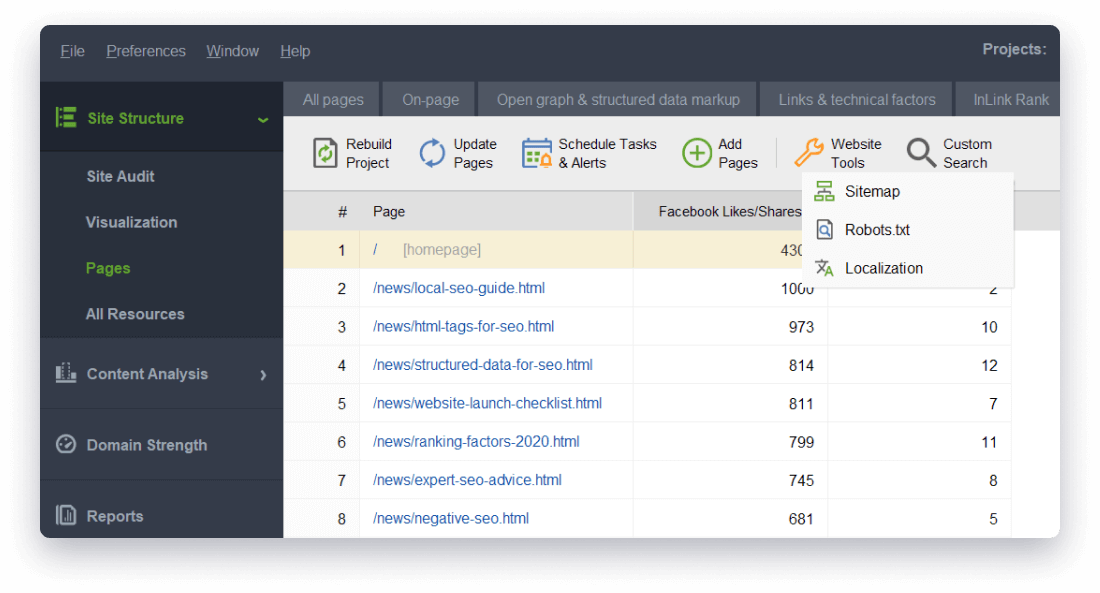
Click Next, and here we go, your free XML sitemap will be generated! Finally, you can check the log or open the destination folder to get the file.
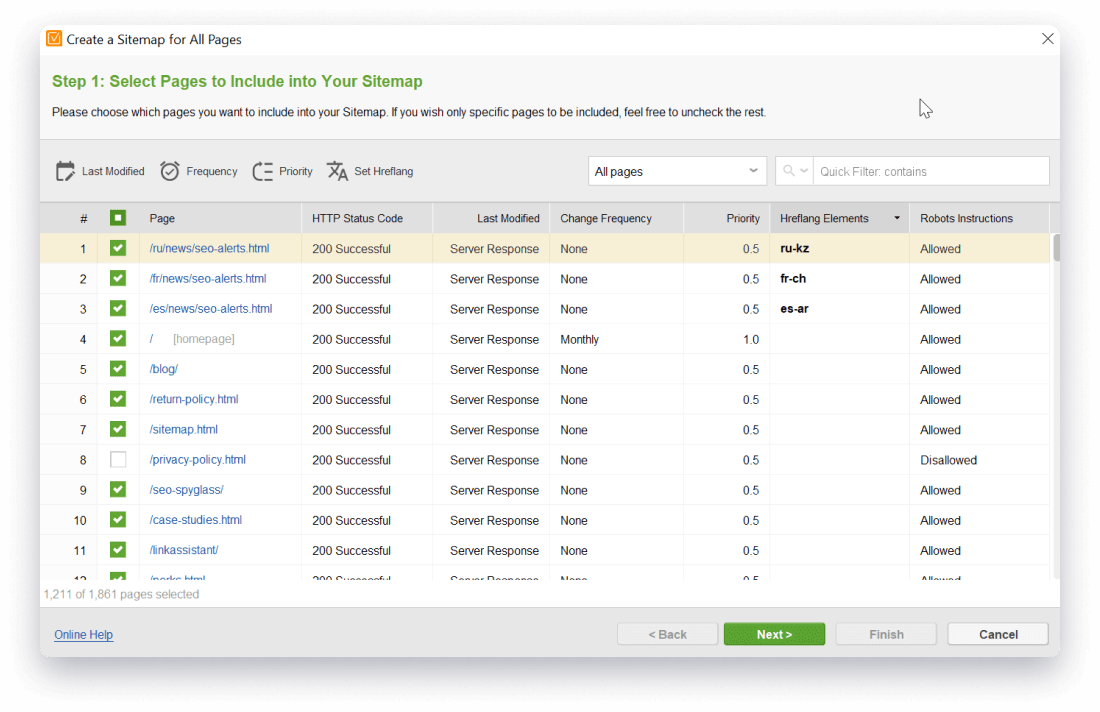
Alternatively, you can select pages in your workspace and right-click on the list to open the context menu, which will allow you to generate your Google sitemap for all the pages or some specific selected pages in the workspace (that's convenient if you have some enabled filters in the workspace).

Create and automatically submit XML Sitemap to Google
To make the process smooth, you can adjust automatic settings for Sitemap generation and submission. Depending on the option you select, you should either specify the destination folder along with the naming settings. Or you configure your settings for the XML Sitemap generator to create and upload the Google Sitemap straight to your website via FTP.
Go to Preferences > XML Sitemap Settings. Here, select a publishing option: uploading your XML Sitemap to the website via FTP or saving to your hard drive.
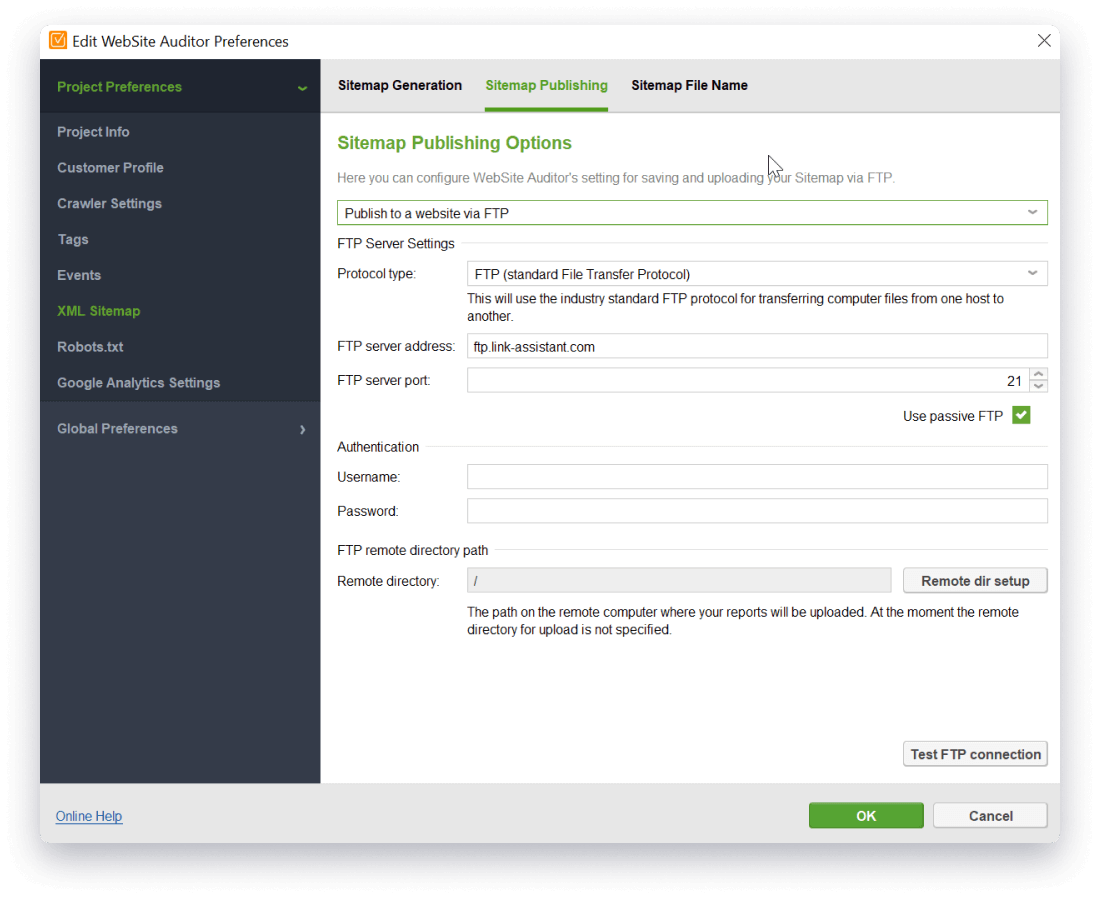
You can edit the publishing options and select to save to your hard drive. Additionally, you can save Google XML Sitemaps to different folders, created by your customers' names or by dates of creation, to keep your sitemaps in chronological order. You can name the sitemap file and choose whether to compress it using ZIP compression.
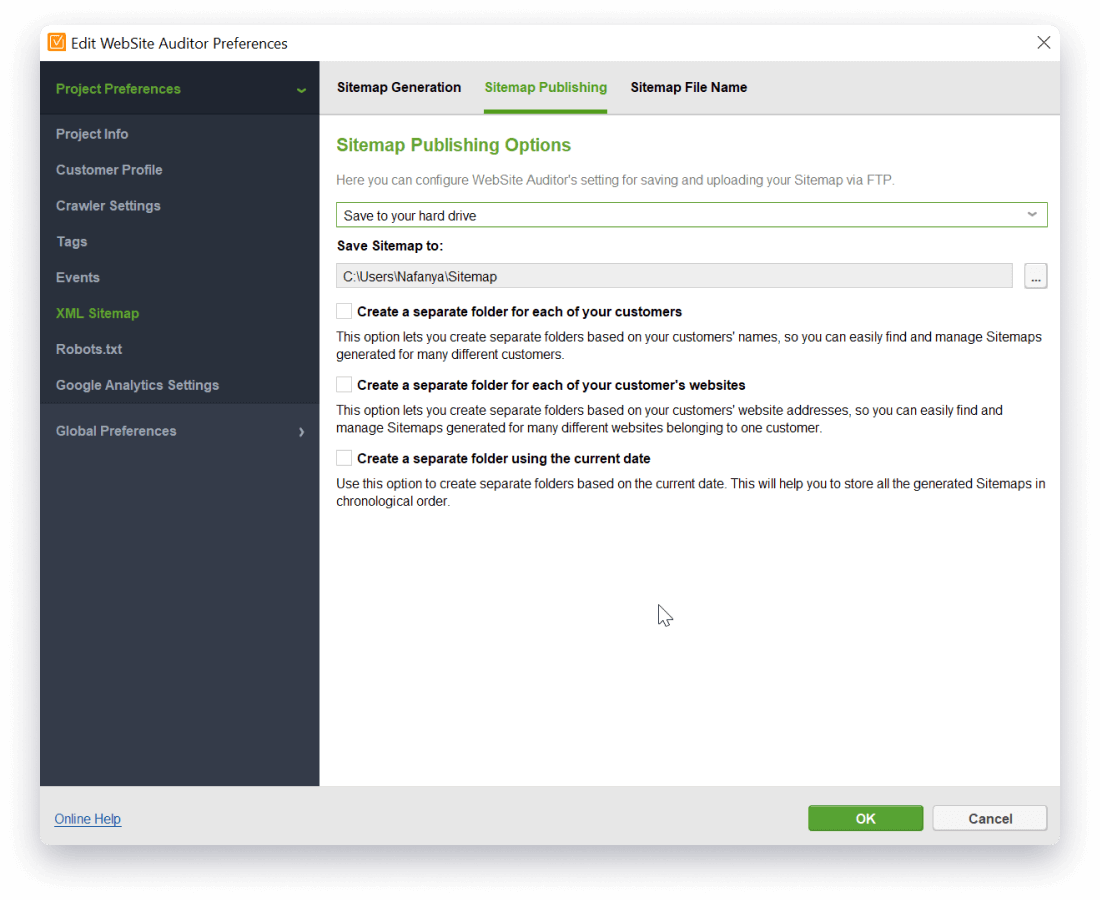
Exclude disallowed pages from your Google XML Sitemaps
You may want to instruct Google what pages not to crawl and how often your pages are updated. For example, category pages, addresses, terms and policies are not changed frequently. So why waste your crawl budget on pages that are updated rarely?
Using general settings, you can select which pages to include in the sitemap, set their change frequency, priority, and last modification date. Unlike many plugins, WebSite Auditor's XML Sitemap generator lets you exclude pages blocked from indexing by robots.txt or X-Robots tags from being added to the Google sitemap.
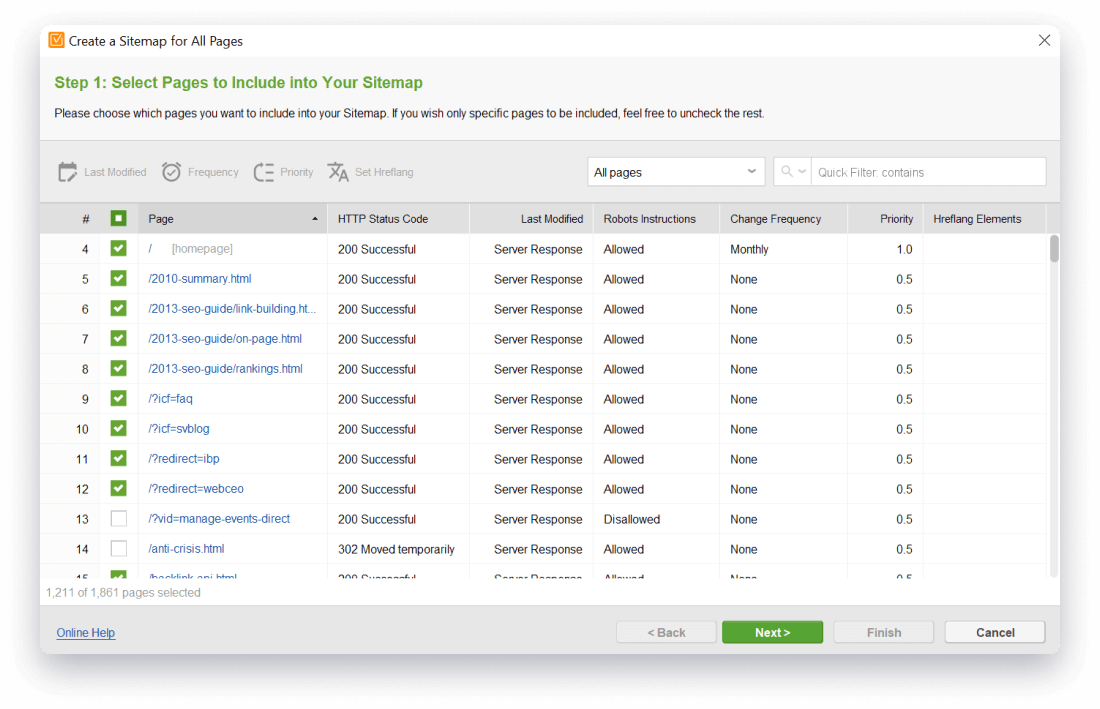
Implement hreflang XML Sitemap
You can include hreflang tags into your XML Sitemap to instruct the search engine what language version it corresponds to. Select a page, right-click on it and hit Set Page Language Versions. A new menu will appear where you will be able to select the language and the country, and designate a page to show up on searches respective to its localization settings.
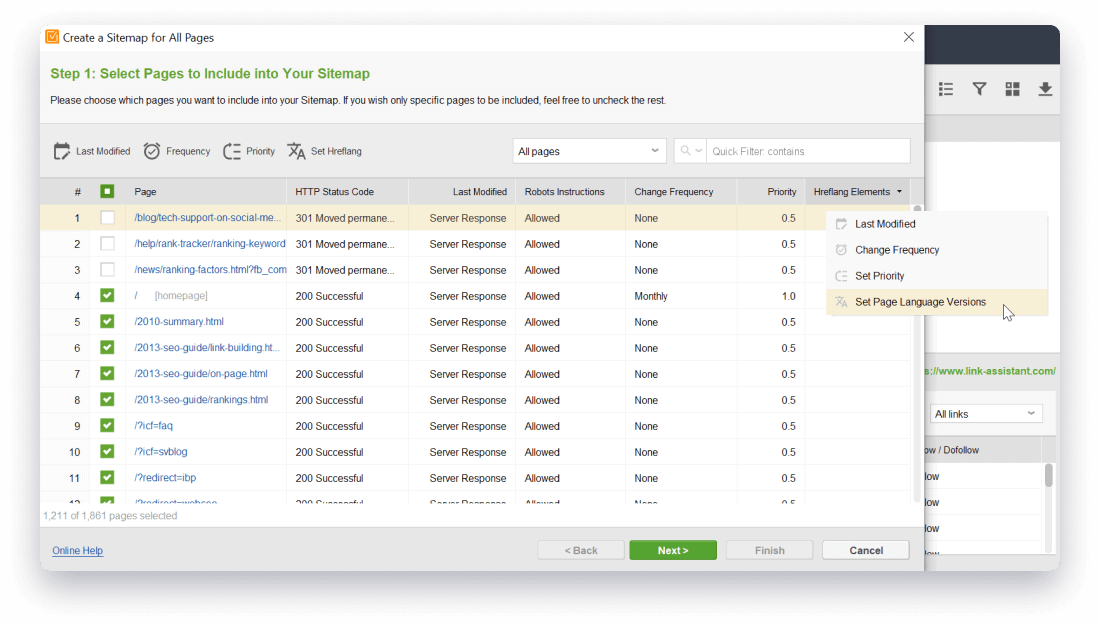
Just a few clicks, and the hreflang tag values will be added to your XML Sitemap.

Generate sitemaps for unlimited number of URLs
Website Auditor XML Sitemap maker lets you create unlimited sitemaps for unlimited number of URLs, for large sites with subdomains and localized versions. A free XML Sitemap will include up to 500 URLs.



